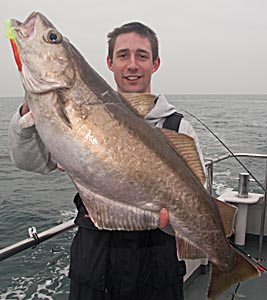 fishing Dartmouth sea angling torbay festival Devon uk charter boat shore plaice turbot bass river dart |
||||||||||||||||||||||||
"Red Gill" Lures Catch Big Pollack off Dartmouth |
||||||||||||||||||||||||
|
Many years ago, my introduction to wreck fishing revolved around presenting a “Red Gill” lure, which approximated the shape and size of a Sand Eel to those worthy predatory fish which hunt and breed in 240 feet of water on our mid-Channel wrecks off Dartmouth. Since then I have repeated this approach using other soft lures such as “Jellyworms”, “Shads” and more recently the “Sidewinder” range of lures, with varying degrees of success, dependant on the day and the inclination of the chosen quarry. There is a demonstrable need for the dedicated wreck angler to keep a good selection of “tempters” in his or her armoury.
My good pal, Alex McDonald, who works for Swift Tackle Ltd, wholesalers to the trade of the excellent brand of “Sakuma” hooks and line, which I use for the majority of my own angling, told me that his company had recently acquired “Red Gill” and are the new distributor for this range, which they intend to expand, with new models, based around a specially designed new “Sakuma” hook, purpose made to work perfectly with them. I was hooked. Alex and I arranged a trip aboard Dave Harrison’s Dartmouth charter boat, the big orange cat, “Gemini”, to put the traditional “Red Gills” through their paces. We invited along several good pals, who were all handed “Red Gills” in a myriad of colours, as we smoothly slipped out of the harbour on a calm day in February. It was a middle sized tide, with overcast sky and a zephyr of a breeze from the west. Some “Red Gills” were moulded in plain solid colours throughout, while others had different coloured bodies and tails. Red, black, orange, blue, purple, lime green, silver; I can’t tell you all of the colours; there is such a splendid array. I loved them. It reminded me of a reunion with a cherished friend. As they say, “Perfik”.
We motored for a little less than 2 hours before settling to drift over a rusting hulk of a wreck. I saw on the electronic sonar fish finder, two clear traces of big fish hanging above the debris. Game on. The lads had all chosen rods in the 20 lb class, of between 7½ feet to “Up-tider” length of around 9 feet. They fitted them with a “7000” size reel from a selection of manufacturers, loaded with 20 to 40 lb braid main line. Most modern anglers prefer braid as it does not stretch, enabling bites to be clearly felt. It cuts cleanly through the water due to its diameter being far less than that of the equivalent monofilament, which minimises the amount of weight required. We all used around 12 to 15 feet of mono line tied to the end of our braid as a rubbing leader, which is easily changed when it becomes chafed by contact with the wreck. Some used a plastic tube boom, while others chose the simpler wire “French Boom”, with around 10 ozs of lead weight attached, clipped on direct, or via a weaker mono “rotten bottom”. A swivel joined the hook length of around 8 feet of 30 or 40 lb mono or fluorocarbon line to the rig, which ended in a “Red Gill” lure of the angler’s preferred choice of colour. We were approaching slack water as we commenced our first drift, around 9 am, but it didn’t seem to make any difference. Let your lure down smoothly to the sea bed and retrieve it for 30 to 50 turns, then repeat the process. If you feel a pluck, don’t “strike” and don’t stop winding. The fish will hook itself. Almost immediately I heard excited shouts of “Fish on” and saw anglers bending their rods into good sized hard fighting fish which ripped yards of line off against a properly set reel clutch. I watched as the anglers pumped up their quarry, lifting the rod against the fish once it had made its initial crash dive, and then lowering the rod tip while getting two or three turns of line back onto the reel. Keep a tight line, don’t let the fish shake its head and throw the lure.
I have to say that all the colour combinations of “Red Gill” lures worked exactly as they should, throughout the run of the tide. They all caught sizeable Pollack, together with a smattering of big Whiting and Ling caught by Graham Dryer, the exceedingly happy proprietor of “Brixham Bait & Tackle”.
By 12 noon we had filled all the boxes on the boat with top quality fish. The best specimen Pollack of the day weighed 21 lbs 7 ozs, caught by Mark Barnett, who works for his Mum and Dad at the Devon Angling Centre, Nr. Kingsbridge. Mark had another fish of 19 lbs 6 ozs 8 dr amongst the 5 that he caught.
In between shooting a video of our day afloat, and taking numerous still photos, I enjoyed a “dabble” and boated around half a dozen hard fighting Pollack myself, all on “Red Gills”. I stopped for my “Pastie” lunch and around 1.30 pm there was a consensus decision that we had caught sufficient fish, so we headed slowly back to Port. I had “Danced with my old friend”. Nothing had changed. The “Red Gills” are still a very effective way of enticing big predatory fish from the mid-Channel wrecks. “Red Gills” are permanently in my arsenal of lures for all my future trips. “Red Gills” are far more hard-wearing than some of the softer plastic lures which have become so fashionable. “More to the point”; excuse the pun, they certainly do work. I shot a 10 minute video of our spectacular day “Gilling”. I know you will want to fish “Red Gill” lures, when you have seen for yourself.
|
||||||||||||||||||||||||
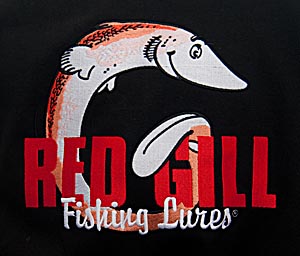
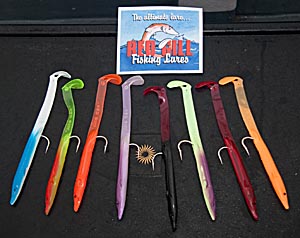
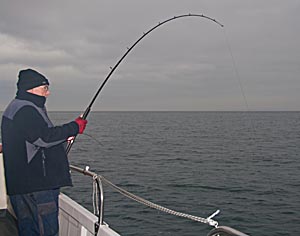
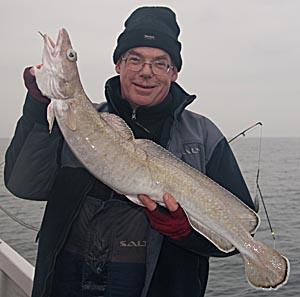
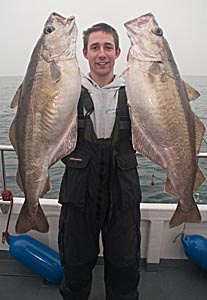
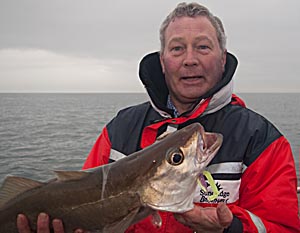
%20&%20Brian%20Coles%20Pollack%20Pair%20Orange%20Redgill%20240209%20%20LTRM%20300dpi%20300w%20c%20p%20Sh%20JPEG.jpg)
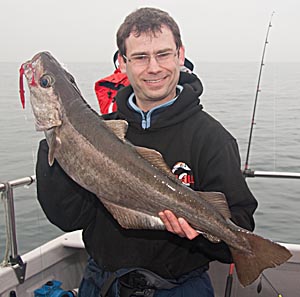
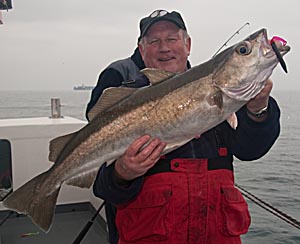
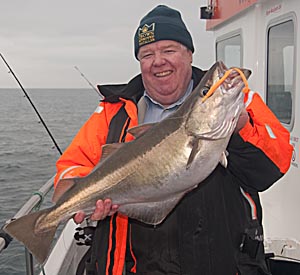
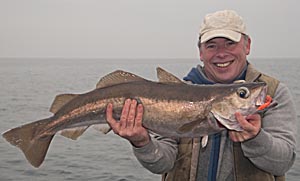
%20240209%20%20LTRM%20300dpi%20300w%20c%20p%20Sh%20JPEG.jpg)
%20&%20Graham%20Dryer%20Pollack%20Pair%20Red%20Redgill%20240209%20%20LTRM%20300dpi%20300w%20c%20p%20Sh%20JPEG.jpg)
